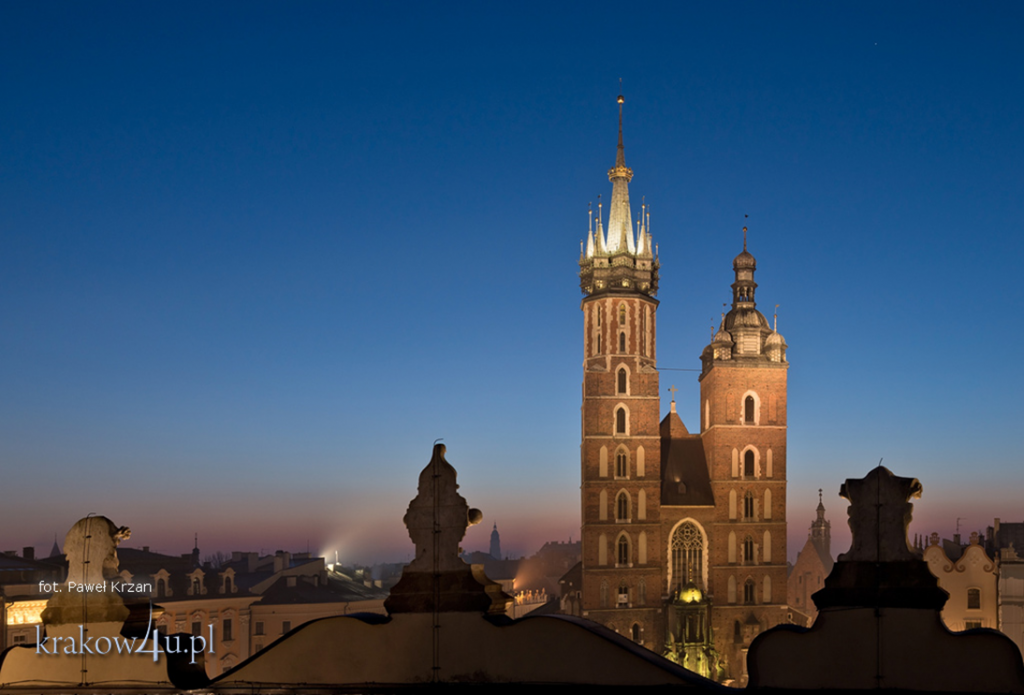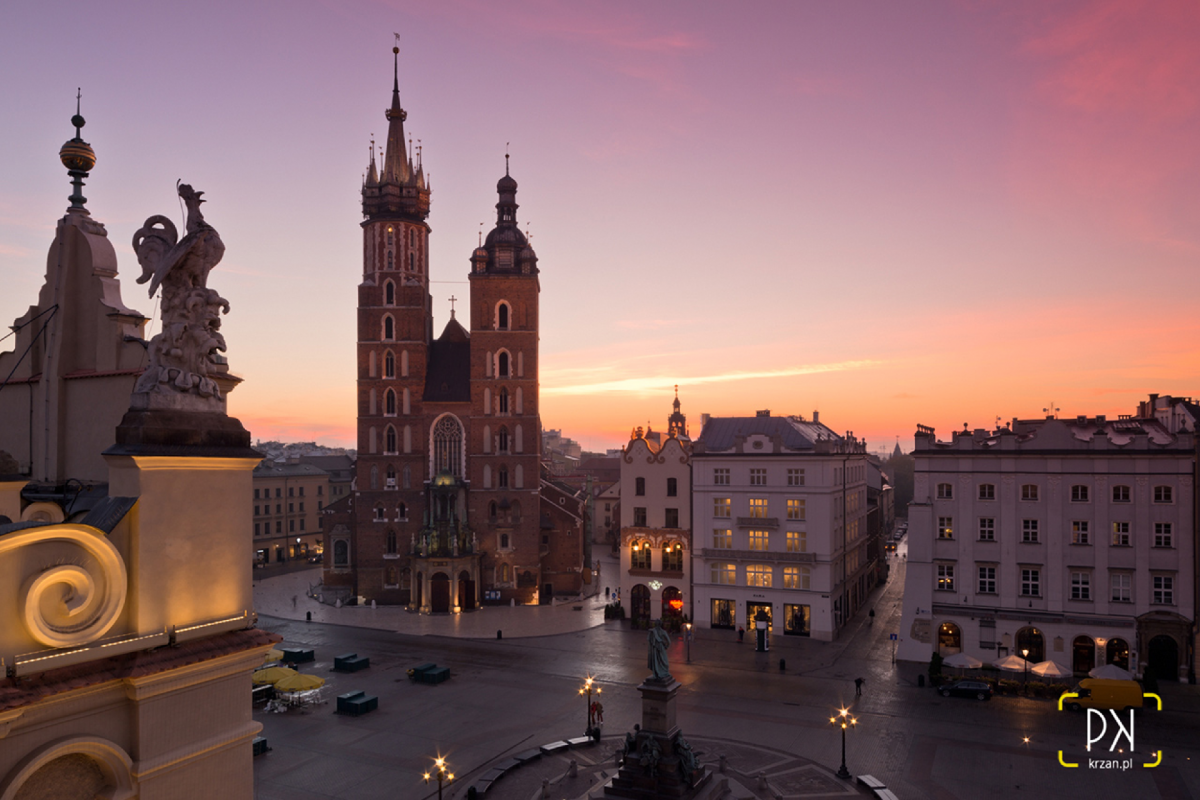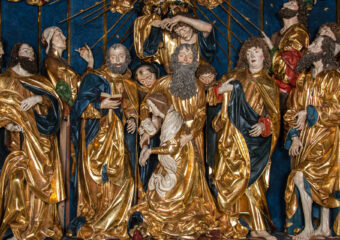The façade of St. Mary’s Basilica has two characteristic towers of various height and architecture.
TOWER ARCHITECTURE
The taller north tower is 82 m high and is also called the Bugle Call Tower or the Excubiarum Watchtower. It is set on a square plan and transforms into an octagon with pointed arch recesses and two storeys of windows at the height of the ninth storey. The individual stories of the whole tower are separated with stone ledges.

The tower is crowned with a Gothic cupola from 1478, made by master Maciej Heringk. The cupola is composed of an octagonal pointed steeple surrounded with a ring of eight smaller steeples. Every hour, St Mary’s Bugle Call is played at the height of 54 m.

At the northern base of the tower, there is a rectangular annex with the stone stairs leading inside. On the left of the entrance, there is a grand bronze plaque of King Jan III Sobieski, which is based on the design of sculptor Pius Weloński to commemorate the 200th anniversary of the Battle of Vienna. There is a d‑tone clock bell with the diameter of 165 cm from the year 1530 on the taller tower.

The shorter south tower is 69 m high and houses the church bells, thus acting as the bell tower. Like the taller tower, it is built on a square plan and its storeys are clearly marked out with ledges and windows. The bell floor is home to the Renaissance chapel of the Conversion of St. Paul, which can be entered through the Renaissance balcony built by Italian masters from the shop of Bartolommeo Berecci. Outside, above the chapel window and under the three-hipped roof, hands the bell ‘for the dying’, which was cast in 1736 by Kacper Koerber of Wrocław. The tower is topped with a late-Renaissance cupola made in 1592, which is composed of an ellipsoidal dome set on an octagonal drum and crowned with an openwork lighthouse. There are four smaller cupolas in the corners, which are set on short hexagonal foundations.

THE LEGEND OF TWO BROTHERS
As the legend goes, two brothers were hired to build the towers of St. Mary’s. The brothers were known as two of Kraków’s best builders. The older brother was supposed to build the south tower while the younger was to handle the north one.
Initially, construction went on as planned and their paces were similar. However, it soon turned out that the south tower, which was being built by the older brother, was clearly taller than his brother’s north tower. In a fit of jealous rage, the younger brother killed his older sibling and ordered that the unfinished south tower be crowned with a cupola. He then proceeded to complete his now taller north tower according to plan.
However, the younger brother was consumed by guilt. On the day of consecration, he climbed to the top of his tower holding the knife he used to murder his brother. He publicly confessed to the murder and jumped.
The murderer’s knife hangs in the gate of the Cloth Hall in the Main Square to this day to remind us of these tragic events.
A different version of the legend says that, after the murder of the older brother, the south tower was completed by supernatural forces before the younger brother, who lost his balance in fear and fell off the scaffolding to his death.
LEGEND OF THE BUGLE CALL

In the middle ages, the bugle call was played from the taller tower, which served as the city’s watchtower. It announced the opening or closing of the gates of Kraków and, more importantly, outbreaks of fires or enemy attacks.
The call abruptly cuts off. As the legend goes, when Poland was being attacked by the Tatars in the 12th century, there was a guard up in St. Mary’s Tower day and night to watch over the safety of the locals. When he noticed the incoming Tatars, he started to play the call to warn the unsuspecting townspeople of the approaching danger. As he was playing, he was shot through the throat by a Tatar arrow.
To this day, the bugle call cuts off at the same moment in memory of the heroic bugler, thanks to whom Kraków was able to rise to battle with the invaders.









